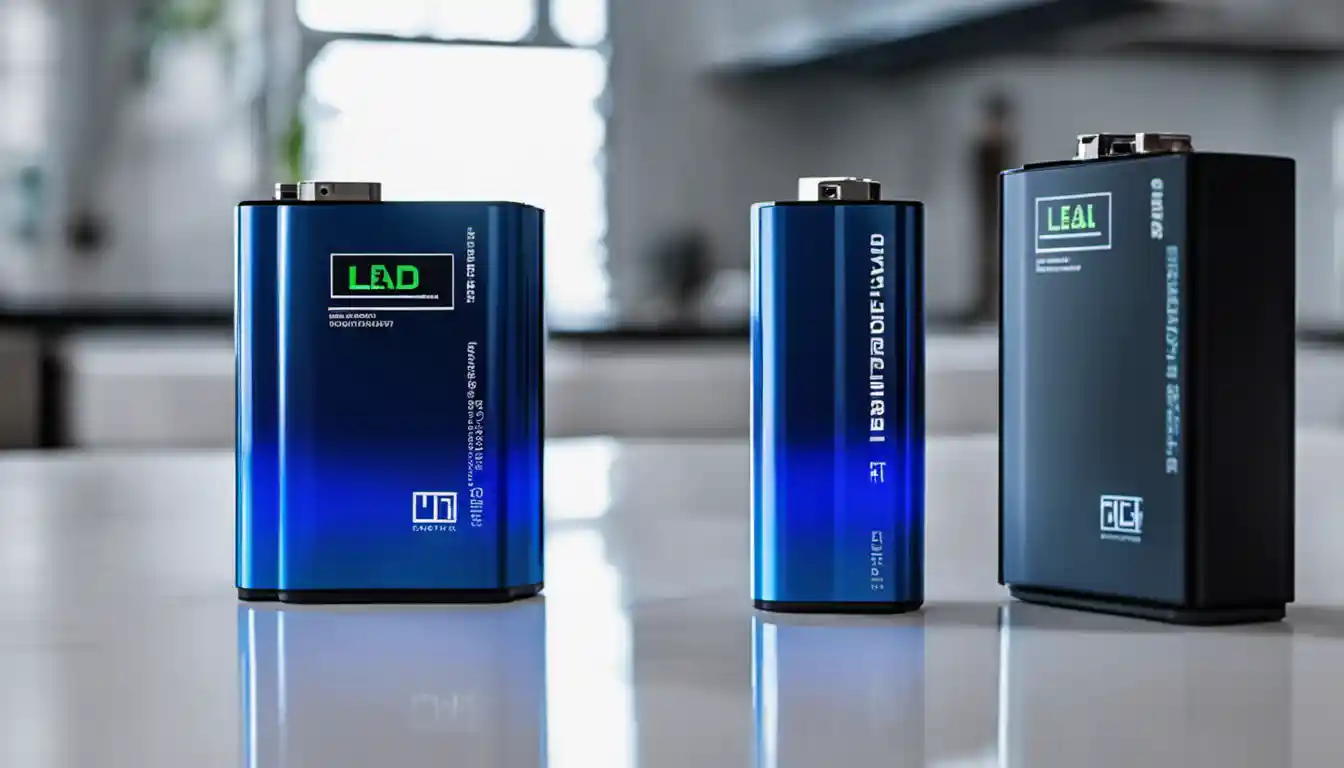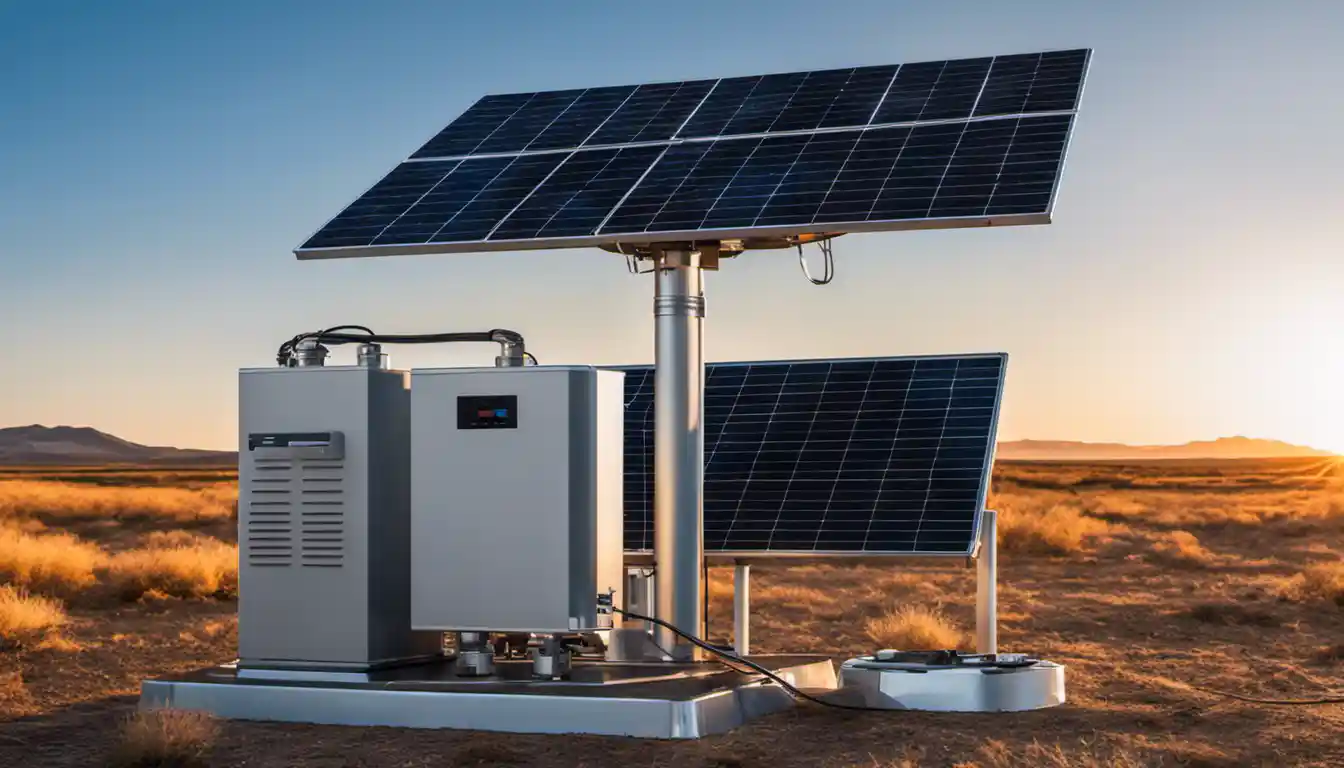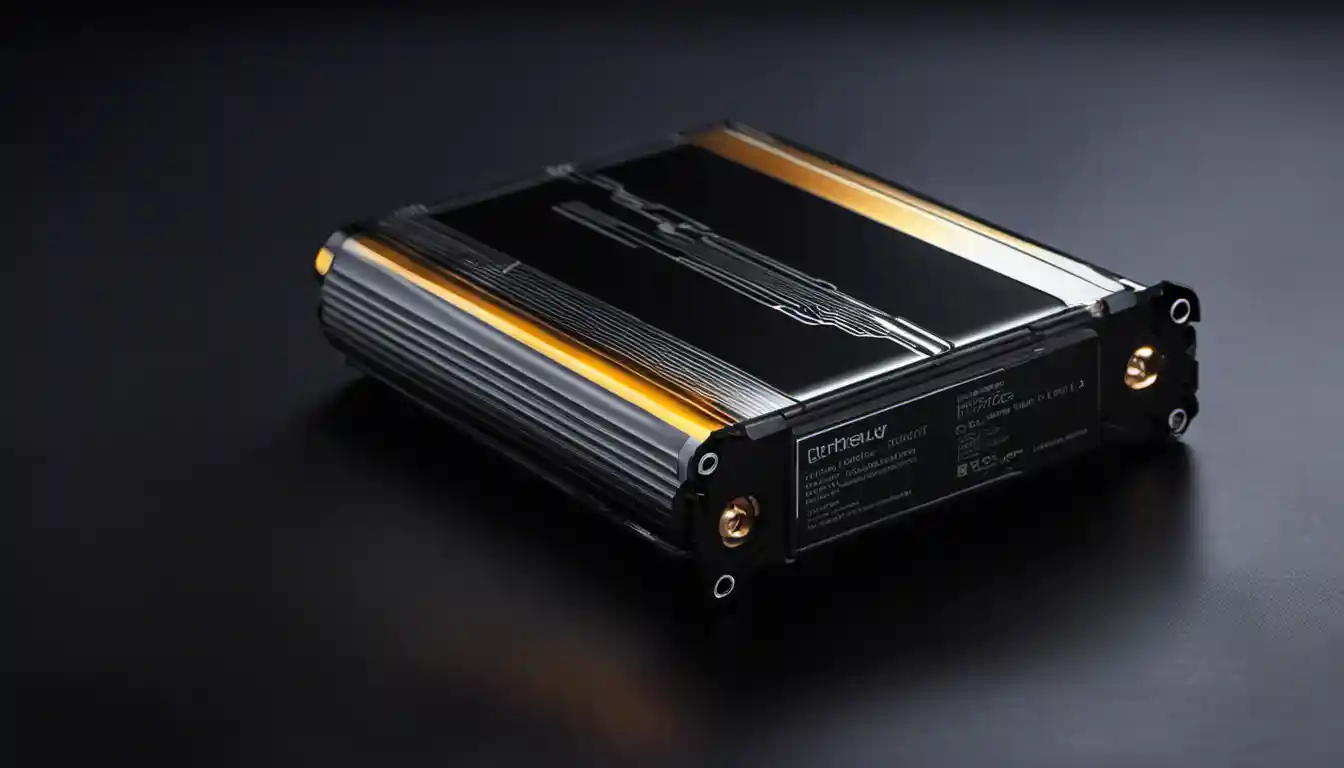Introduction to Solar Batteries
A solar battery stores the energy generated from a solar panel system during daylight, for use whenever required. It enables a solar power system to run even during the night or cloudy days, storing excess electricity produced by the panels. The energy stored in the battery is released as needed to power home appliances.
What is a Solar Battery?
A solar battery, essentially, is a device that reserves energy for later consumption that is charged with a connected solar system. Typically, when your solar panels generate more electricity than you can use in your home, that excess energy is sent back to the grid. Yet when you install a solar battery, excess energy is stored onsite for use when needed, possibly when the sun is not shining.
See also: Deep Cycle Solar Batteries (The Best Option For Solar)
Understanding Solar Batteries and Their Importance
Solar batteries convert the DC energy being produced by your solar panels and store it as AC power for later use. In some cases, solar batteries have their own inverter and offer integrated energy conversion. The higher your battery’s capacity, the larger solar array it can store. For many homeowners, the main reason to install solar batteries is to reduce their carbon footprint, but they also provide practical benefits such as energy backup during power outages.
See also: Dual Battery for Solar (Goal Zero Power Systems)
The Science Behind Solar Batteries
In practice, when sunlight hits your solar panels, the panels produce electricity. This electricity is used to power your home and charge your solar battery. Don’t worry if this sounds complicated, we’ll extensively cover exactly how a solar battery works in the sections below.
See also: Difference Between Solar Battery and Normal Battery: A Comprehensive Guide
Lithium-Ion Batteries and How They Work
Lithium-ion batteries are a prevailing choice for solar energy storage because of their high-energy density, compactness, and lightness. The specifics behind how lithium-ion batteries work can be intricate, but it essentially involves a process called intercalation. During charging, lithium ions move from the cathode to the anode through an electrolyte (organic lithium salt). During discharging, lithium ions move back from the anode to the cathode, releasing energy.
See also: Solar Energy Storage Methods: Comprehensive Guide for Renewable Energy Enthusiasts
Lead-Acid Batteries in the Solar System
Lead-acid batteries operate differently from lithium-ion batteries. They have lower energy density and are heavier, yet they are cheaper and have been used for over a century – making them a tried and tested solution for stationary energy storage. In lead-acid batteries, power is produced when a sulfuric acid electrolyte reacts with lead plates inside the battery, causing chemical energy to be converted into electrical energy.
See also: Cheapest Way to Store Solar Energy: A Comprehensive Cost-Saving Guide
Comparisons of Battery Storage Technologies
To determine which solar battery type is best for your needs and budget, comparing the two prevalent types, lithium-ion and lead-acid batteries, can be helpful.
See also: DIY Battery for Solar: Step-by-Step Guide to Building Your Own Solar Power System
Lithium-Ion Battery vs. Lead-Acid Battery

On one hand, lithium-ion batteries are more expensive upfront. On the other hand, they have a longer lifespan and can store more energy relative to their size, making them a more cost-effective option in the long run.
Lead-acid batteries, however, can be an affordable option for homeowners who are less concerned about long-term payback and simply want a reliable, easy-to-use source of backup energy.
See also: Can A Solar Battery Be Used in A Car? The Future of Automotive Power
Understanding Solar Energy Storage
Efficient solar energy storage is essential for any solar-powered system. Choosing the most suitable option depends on how you plan to use it. There are two types of solar storage systems, AC coupled storage, and DC coupled storage.
See also: How Much Does Solar Battery Cost? A Comprehensive Pricing Guide
AC Coupled Storage
In AC coupled battery storage systems, the solar panels are connected to a standard solar inverter that changes the power from DC (direct current) to AC (alternating current). An additional inverter then changes it back to DC, which charges the battery. The electricity has to be converted twice, making this set-up less efficient, but it allows you to easily add a battery onto an existing solar panel system.
See also: How Long Can a Solar Battery Power a House? Discover the Power of Solar Energy
DC Coupled Storage
In DC coupled systems, the solar panels are connected directly to the battery, which is then connected to an inverter. Unlike an AC coupled system, the electricity only needs to be converted once, from DC to AC. This makes it more efficient, but it can make the system more complicated to set up, as it often needs to be installed at the same time as the solar panels.
See also: Pros and Cons of Solar Battery Storage: A Comprehensive Guide for Homeowners
Integral Parts of a Solar Power System
Solar power systems are more than just mounting panels on your rooftop. It’s actually a network of interconnected equipments working together to convert sunlight into electricity your home can use. Here are these integral parts, including solar batteries, and how they play a role in your system.
How Solar Batteries Work with Solar Panels
The working relationship between solar panels and solar batteries is pretty simple: solar panels harvest energy from the sun, creating electricity, that charges the solar batteries. The batteries, in turn, store that energy for later use when the panels aren’t generating electricity like at night or during an outage.
How Solar Batteries Work with a Hybrid Inverter
The inverter’s job is essential. It converts DC (direct current) power produced by the solar panels and battery into AC (alternating current) power, which is what your home uses. A hybrid inverter does this and also regulates battery charging. Some solar batteries are sold with a built-in hybrid inverter.
Insights to Solar Battery Storage
Understanding how to store solar energy in a battery can seem complicated, especially if you’re not an engineer. I’ve tried to simplify this as much as possible in the next section.
How To Store Solar Energy in a Battery

When sunlight hits a solar panel, it generates DC electricity. This electricity then passes through a charge controller into the battery. Once the battery is full, the charge controller ensures it’s not overcharged, maintaining the battery’s health and longevity.
The Benefits of Solar Battery Storage
There are several benefits to adding solar battery storage to your system. They provide backup power during an outage, help you become carbon neutral, allow for the generating of electricity beyond sunset and offer silent operation for backup electricity in comparison to traditional generators.
Different Types of Solar Batteries
Beyond the lithium-ion and lead-acid batteries mentioned earlier, there are other types of solar batteries worth noting.
Nickel-Cadmium Solar Batteries
Nickel-cadmium (NiCd) batteries are more costly than lead-acid batteries but also more durable, with a life expectancy of up to 20 years.
Flow Solar Batteries
Although relatively new and expensive, flow batteries potentially offer a longer lifespan (greater than 20 years) and lose very little capacity over time, helping to justify the additional cost.
Considerations When Selecting a Solar Battery
When looking to invest in solar energy, you’ll want to choose the right solar battery for your needs and preferences, so you will need to consider factors like efficiency, capacity, safety, and cost.
Key Factors for Selecting the Best Solar Battery for Your Needs
Considering how you plan to use your solar panel system and the amount of electricity your household uses can help you decide on battery size and overall storage capacity. The more storage capacity, the more solar-generated electricity can be stored for later usage.
Safety Considerations

Ensuring your solar battery choice is safe is paramount. For example, some low-quality lithium-ion batteries are fire risks, so certifications like the Underwriters Laboratories (UL) approval are critical.
Cost and Warranty Balance
Expense is a significant aspect in choosing a solar battery, as prices vary widely. More affordable options may come with a shorter warranty or lifespan, so always check the cost against the warranty.
Addressing Frequently Asked Questions (FAQs)
How Long Do Solar Batteries Last?
Solar batteries’ lifespan depends heavily on the type and quality of the battery. High-quality, deep-cycle batteries can often last between 5-15 years or longer. For more in-depth information on this topic, please read our article – How Long Do Solar Panel Batteries Last?
What Are the Disadvantages of Using Solar Batteries?
While the benefits of using solar batteries are vast, there are a few downsides. For example, the cost of installing solar batteries can be high, and they require regular maintenance to keep them in good working order, especially lead-acid batteries.
How Many Batteries Does It Take to Power a House with Solar?
How many batteries you need to power your house can depend on a number of factors: the size and usage level of your home, the efficiency of your panels and batteries, and your goals for off-grid living. It’s essential to match the size of your battery system to the output of your solar panels, as discussed in our article – Solar Panel to Battery Ratio.
How Long Do Solar Batteries Hold Charge?
This varies depending on the type and quality of the battery, but most solar batteries designed for daily cycling are designed to hold their charge for at least 24 hours.
Which Solar Batteries Are Currently the Best?
The best solar battery for your needs can vary depending on numerous factors, but some popular choices on the market today include the Tesla Powerwall, LG Chem RESU, and Sonnen eco.
To wrap it up – if you’re pondering the question “Does a solar panel need a battery?”, the answer is not necessarily. Solar panels can work without a battery. However, without a battery to store the energy your panels produce, you can only use solar electricity while the sun is out. So, if you’re considering moving to solar energy and you’re curious about which battery will best suit your needs, and whether you can even run your car batteries on solar panels, I hope this guide has been informative. The future of solar is bright, folks! Keep yourself educated and let’s help together in paving the way towards a greener, cleaner Earth.



